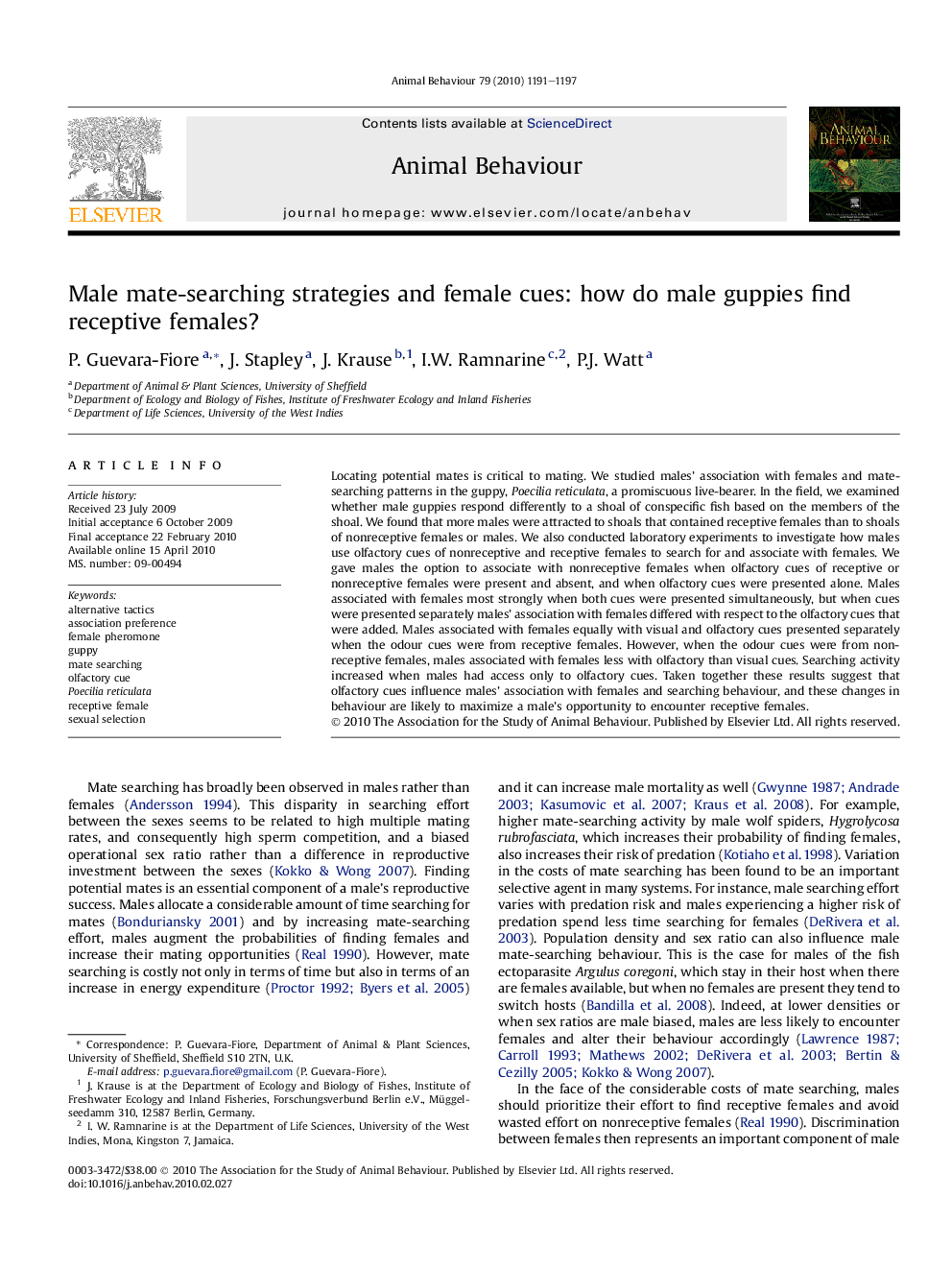| Article ID | Journal | Published Year | Pages | File Type |
|---|---|---|---|---|
| 2417229 | Animal Behaviour | 2010 | 7 Pages |
Locating potential mates is critical to mating. We studied males’ association with females and mate-searching patterns in the guppy, Poecilia reticulata, a promiscuous live-bearer. In the field, we examined whether male guppies respond differently to a shoal of conspecific fish based on the members of the shoal. We found that more males were attracted to shoals that contained receptive females than to shoals of nonreceptive females or males. We also conducted laboratory experiments to investigate how males use olfactory cues of nonreceptive and receptive females to search for and associate with females. We gave males the option to associate with nonreceptive females when olfactory cues of receptive or nonreceptive females were present and absent, and when olfactory cues were presented alone. Males associated with females most strongly when both cues were presented simultaneously, but when cues were presented separately males’ association with females differed with respect to the olfactory cues that were added. Males associated with females equally with visual and olfactory cues presented separately when the odour cues were from receptive females. However, when the odour cues were from nonreceptive females, males associated with females less with olfactory than visual cues. Searching activity increased when males had access only to olfactory cues. Taken together these results suggest that olfactory cues influence males’ association with females and searching behaviour, and these changes in behaviour are likely to maximize a male’s opportunity to encounter receptive females.
